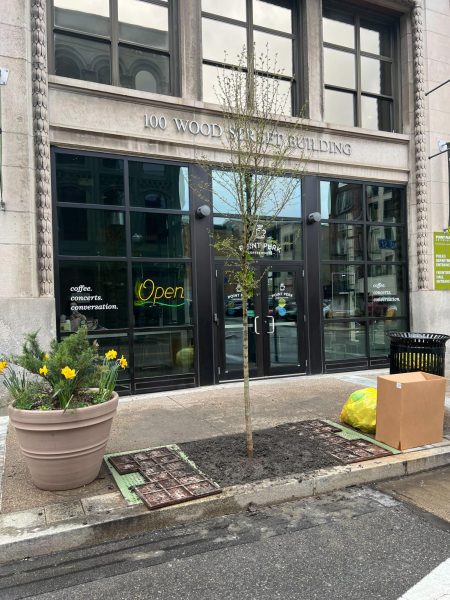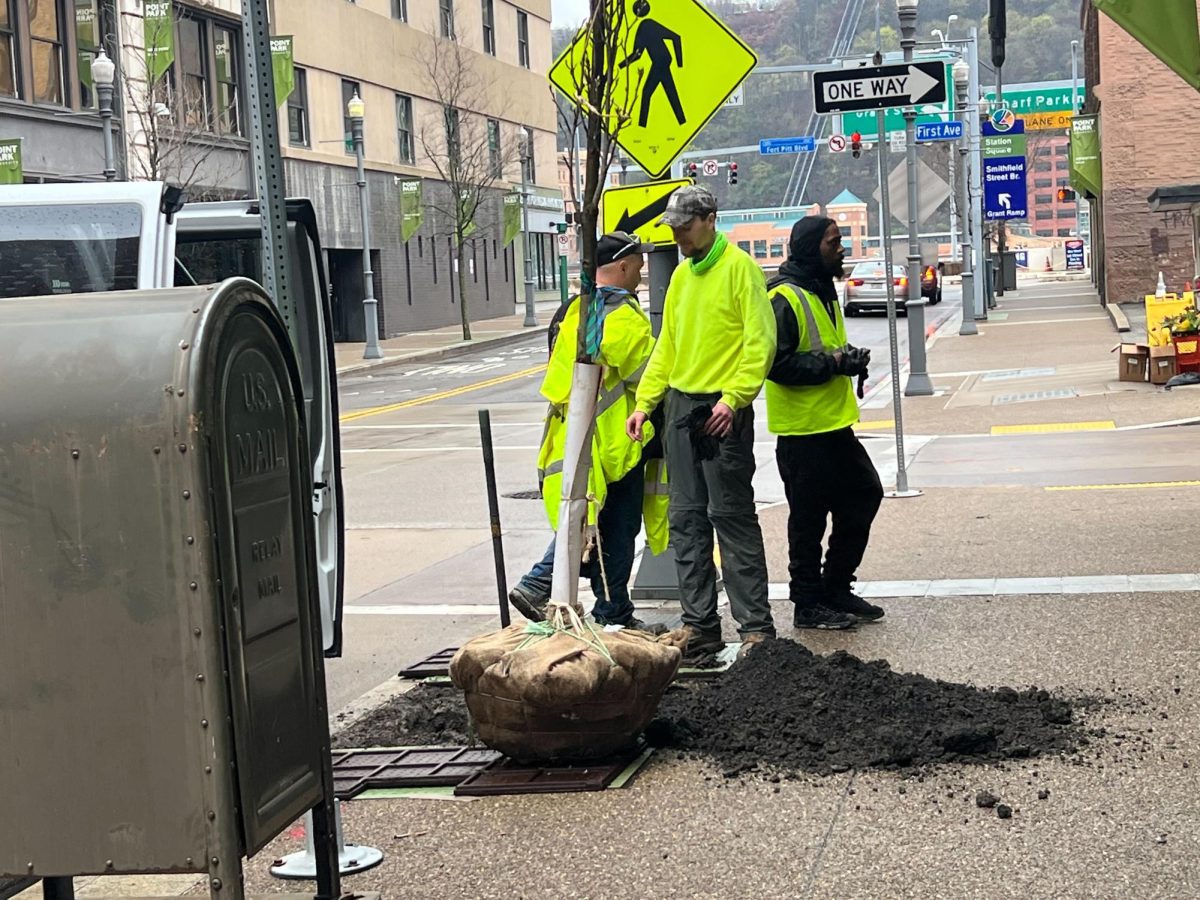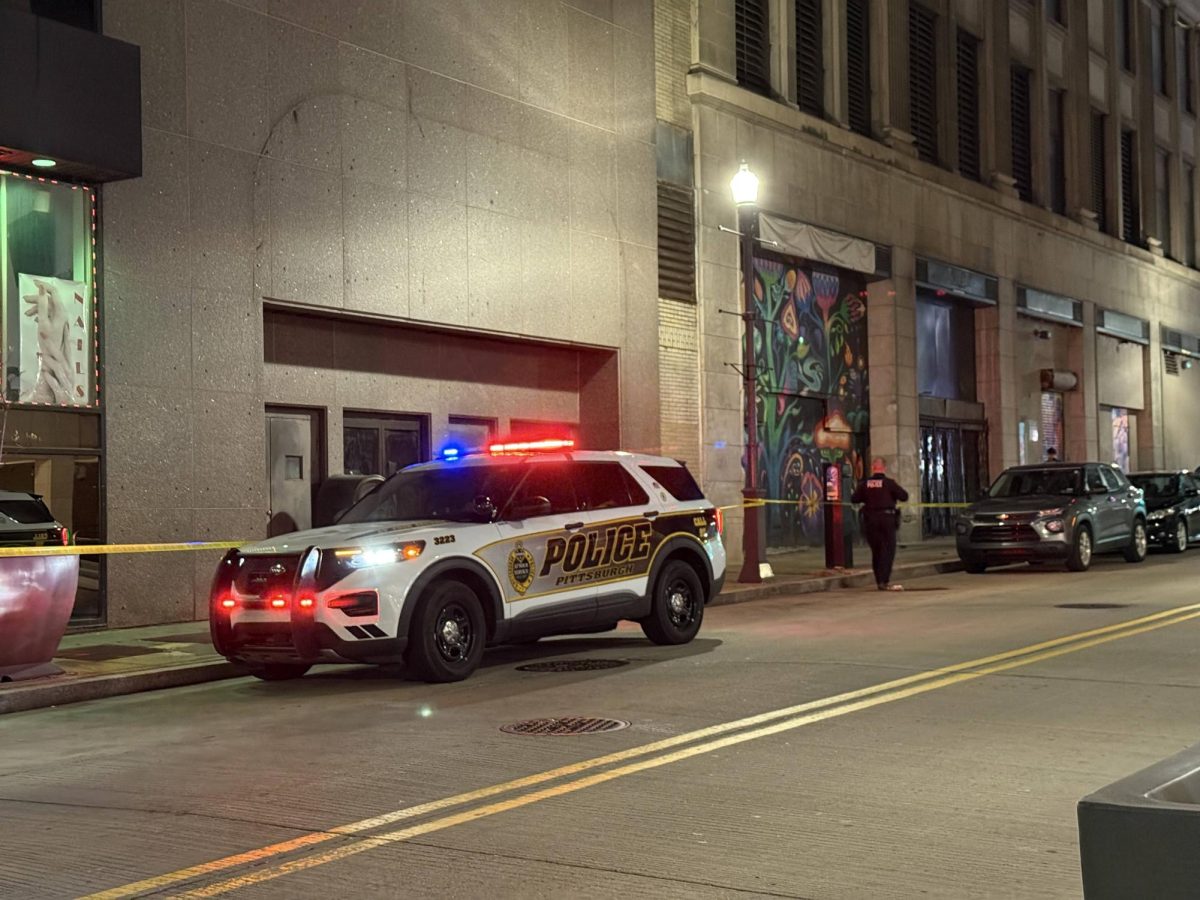The Pittsburgh Downtown Partnership (PDP), a local non-profit, pitched eight new trees into empty tree pits along Wood Street this past Wednesday, April 12.
Six were planted across from Village Park and another two next to Academic Hall.
According to Physical Plant’s Vice President of Operations, Chris Hill, the pits have been empty since 2019, when the city removed eight trees that were infected by disease.
“We had been calling [the City] since 2021 asking when the trees would be back,” Hill said.
“We were very excited to see [the trees replanted]. I think that’s going to really tie in that corridor and make it look a lot nicer than just some empty grates,” Hill said.
The eight trees planted on campus are a part of the PDP’s city-wide effort to fill empty tree pits.

The non-profit was awarded 21 trees this past spring by TreePennsylvania’s TreeVitalize grant.
The City of Pittsburgh also provided the PDP with 12 trees.
“I think they’re really cute, I think it’s great,” said Brooklyn Egli, a freshman dance major. “It’s great that they were free, but it shouldn’t have taken five years for them to be replanted.”
“Trees are great,” said Bruce Chan, senior director of urban design for the PDP. “But in urban conditions like Downtown it’s really difficult for trees to grow really big and for us to take the benefits of what they have to provide.”
Chan said that the first year of the tree’s life after it is first planted is crucial to its survival.
“Trees are really expensive,” said Chan. “The longer we can keep a tree healthy and the longer we can keep [it] from having any kind of issues is better from all standpoints.”
“You get a bigger tree, you save money, people love it, people will come back Downtown, so for us it’s about getting the right tree in from the very beginning,” Chan said.
The City has a strict code enforcing what species of trees may be planted, and where they are allowed to be planted depending on their size.
Dogwoods, crabapples and cherry trees are among the laundry list of trees classified as “small” by the City’s 2020 list.
Only small trees may be planted along the streets, so as not to interfere with power lines.
Chan said that the PDP does its best to pick the most resilient species of trees for life Downtown.
“We need trees that are going to be salt tolerant,” said Chan. “We need trees that are going to be able to survive in lower light conditions. There’s only certain trees that do that.”
While Chan did not specify which species of tree was best for life Downtown, he assured the City’s list was all suitable.
Chan said that rock salt spread to melt ice in the winter is often damaging to street trees.
“The city does have guidelines that they use to try to help big institutions that have their own crews,” Chan said. “[The crews] don’t really have time to be meticulous and I get that.”
Chris Hill said he would ensure that Point Park would do its best to keep the trees alive.
“The salt we use is good for animals and trees, it’s not that toxic type of salt,” Hill said. “We try to limit plowing the snow up against the trees.”
Most maintenance, like watering and pruning of trees, is left to the City, but Hill said that Physical Plant does occasionally trim low-hanging branches.
The spread of plant diseases are crucial killers of urban trees.
Poor environmental conditions like those of Downtown Pittsburgh often cripple trees, making them susceptible to cankers, dark lesions that weaken the tree and make it easier to be killed by pests.
Verticillium wilt is another killer, a fungal soil infection that is capable of killing trees in a single season, according to the City of Toronto’s Forest Management.
Several trees included on the City’s list are particularly susceptible to verticillium wilt.
Chan said that one of the key means of preventing these diseases from spreading is varying which species are planted on each street.
“We’ve learned through research and other instances where a virus or fungus or bug or beetle will take over, and all the trees on one street will die,” Chan said. “One of the better practices now is to mix trees amongst themselves so you don’t have a sudden die-off of all one species to this one fungus.”
Chan said that, though things like the empty pits on campus are typically not thought about, once you see them, you can’t unsee them.
“I love Penn Avenue between 10th and 9th Street because it has huge trees, and we really want to keep those bigger trees because they just add a little charm to Downtown,” Chan said.
The PDP continues to find empty pits across Downtown and secure grants to get trees planted in them.








